


The Crucial Role Of Team Dynamics In Paintball
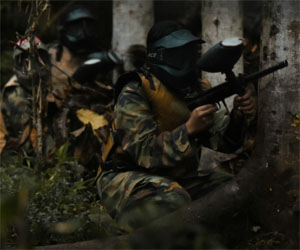
In the heart-pounding world of paintball, where strategy meets adrenaline, team dynamics are the lifeblood of success. Paintball is more than just a recreational pursuit; it's an intricate dance of cunning tactics, individual skill, and teamwork, all set against a canvas of adventure. In this article, we'll explore the essential role of team dynamics in paintball and how they can make the difference between victory and defeat on the battlefield.
The Power Of Team Dynamics In Paintball
Team dynamics encompass the interactions and coordination between paintball players. Whether you're a seasoned pro or a novice, the way your team functions can significantly impact your performance and the outcome of the game.
Here's why team dynamics matter:
Strength In Numbers: Paintball is a team sport, and the synergy between teammates is crucial. A well-coordinated team can overcome individual weaknesses, outmaneuver opponents, and achieve victory.
Effective Communication: In paintball, communication is the lifeline of teamwork. Sharing information about enemy positions, plans, and actions helps the team adapt and respond to the evolving situation.
Cover And Support: Teammates can provide cover fire and support, creating opportunities for their allies to advance, reload, or take strategic positions. This teamwork is essential for maintaining control on the battlefield.
Strategic Combinations: Teams can devise strategies that involve various roles, such as snipers, assault players, and defenders, working in tandem to achieve a common goal. Combining these roles strategically is a hallmark of effective team dynamics.
Unity And Morale: A cohesive team fosters unity and high morale, which, in turn, boosts confidence and motivation. This positive atmosphere can lead to better decision-making and performance.
Key Aspects Of Effective Team Dynamics
Communication: Open and clear communication is the cornerstone of effective team dynamics. Players should use radios, hand signals, or verbal cues to convey vital information to their teammates.
Roles And Responsibilities: Define roles within the team based on each player's strengths and preferences. This helps in optimizing the team's performance and allowing players to focus on their specific tasks.
Trust And Support: Trust your teammates and provide support when needed. Trusting that your teammates will cover you or execute their part of the strategy is vital for effective teamwork.
Adaptability: Team dynamics should allow for adaptability. Paintball scenarios can change rapidly, so the team must be flexible and ready to adjust their tactics as needed.
Practice Together: Regularly practicing as a team can enhance coordination and unity. Familiarity with your teammates' playing styles and tactics can be a significant advantage.
Positive Communication: Maintain a positive and constructive atmosphere within the team. Encourage one another and provide constructive feedback when necessary.
The Art Of Mastering Team Dynamics
To master the art of team dynamics in paintball, practice is essential. Regularly participating in paintball matches with your team is the best way to refine your strategies and adapt to different scenarios. Learn from experienced players, study their teamwork, and incorporate their successful tactics into your own.
In the colorful battle of paintball, team dynamics are the linchpin of success. By honing your team's coordination, communication, and synergy, you can enjoy the thrill of the game while consistently achieving victory in the heart-pounding realm where strategy and adrenaline collide. So, load your marker, rally your teammates, and aim for triumph through the power of effective team dynamics.
A Natural Connection
 Mountain bikers have a unique advantage when it comes to exploring the outdoors. Unlike many other outdoor activities, biking allows riders to cover substantial distances, making it possible to reach less-accessible areas. These hidden gems often remain untouched by hikers or other outdoor enthusiasts. For those who want to escape the hustle and bustle of city life, mountain biking provides an avenue to explore untouched natural landscapes that offer solitude and a profound connection with the environment.
Mountain bikers have a unique advantage when it comes to exploring the outdoors. Unlike many other outdoor activities, biking allows riders to cover substantial distances, making it possible to reach less-accessible areas. These hidden gems often remain untouched by hikers or other outdoor enthusiasts. For those who want to escape the hustle and bustle of city life, mountain biking provides an avenue to explore untouched natural landscapes that offer solitude and a profound connection with the environment.
The outdoor connection extends to the myriad of environments that mountain bikers can explore. From lush, green forests to arid, rocky deserts, the diversity of terrains is astounding. This variety ensures that there's something for every rider, from those who seek the serenity of the woods to those who crave the challenges of technical rocky trails.
Furthermore, mountain biking fosters an environmentally conscious approach to outdoor exploration. Riders understand the importance of preserving the natural environment and following the principles of "leave no trace." They avoid disturbing wildlife, refrain from littering, and respect trail rules and guidelines. This responsible approach ensures that the beauty of the outdoors remains intact for future generations.
The sense of adventure and camaraderie among mountain bikers further enhances the experience of embracing the outdoors.



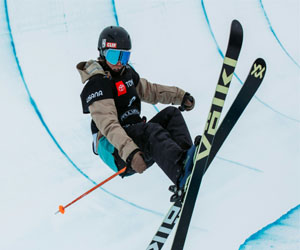

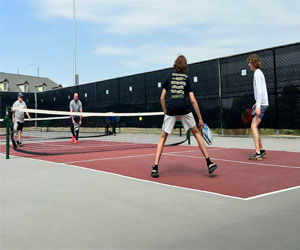


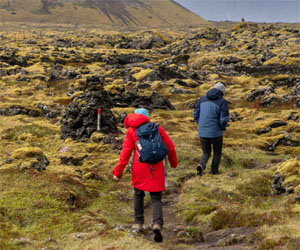 Understanding The Basics: Mastering the art of outdoor adventure begins with understanding the fundamentals. Start by learning essential outdoor skills, such as navigation, first aid, and wilderness survival. These skills are your foundation, providing the knowledge and confidence you need to thrive in the great outdoors. Take courses or workshops, read books, and practice these skills until they become second nature.
Understanding The Basics: Mastering the art of outdoor adventure begins with understanding the fundamentals. Start by learning essential outdoor skills, such as navigation, first aid, and wilderness survival. These skills are your foundation, providing the knowledge and confidence you need to thrive in the great outdoors. Take courses or workshops, read books, and practice these skills until they become second nature.
Gear And Equipment: Choosing the right gear and equipment is crucial for any outdoor adventure. Invest in high-quality gear that suits your specific activities, whether it's hiking, camping, kayaking, or rock climbing. Proper equipment enhances your safety, comfort, and overall experience. However, keep in mind that more gear doesn't always mean a better adventure. Learn to pack efficiently and carry only what you need to minimize your environmental impact.
Leave No Trace: One of the most important aspects of mastering outdoor adventure is practicing Leave No Trace principles. Leave No Trace is an ethical framework that encourages responsible outdoor recreation. It involves leaving natural areas as you found them, minimizing human impact on the environment. This includes packing out all trash, respecting wildlife, and staying on designated trails. By following these principles, you contribute to the preservation of our wilderness areas for future generations.
Fitness And Conditioning: Outdoor adventures often demand physical and mental stamina. Regular physical conditioning is essential for mastering the art of outdoor adventure. Train your body for the specific activities you plan to undertake.
Your Path To Slope Success
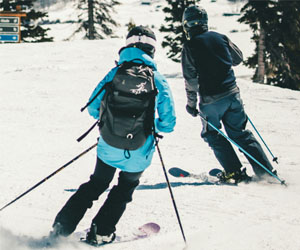 2. Wear Appropriate Clothing: Dress warmly and in layers to stay comfortable on the slopes. Wear moisture-wicking base layers to keep sweat away from your skin, insulating layers to trap warmth, and a waterproof and insulated ski jacket and pants to protect against the cold and snow.
2. Wear Appropriate Clothing: Dress warmly and in layers to stay comfortable on the slopes. Wear moisture-wicking base layers to keep sweat away from your skin, insulating layers to trap warmth, and a waterproof and insulated ski jacket and pants to protect against the cold and snow.
3. Choose The Right Equipment: Renting skiing equipment is a practical option for novices, as it allows you to try different gear without a significant investment. Make sure your boots are well-fitted, and your skis are suited to your skill level. Ski shops and rental centers can provide expert advice.
4. Master The Snowplow (Pizza) Technique: The snowplow, often called the "pizza" technique, is the foundation for beginner skiers. To snowplow, point the tips of your skis inward, creating a wedge shape. This position slows you down and helps you control your speed. As you progress, you can start making parallel turns.
5. Learn To Turn And Stop: Turning and stopping are fundamental skiing skills. Practice turning your skis by shifting your weight from side to side, and learn to stop by bringing your skis together and applying pressure to the inside edges. These skills will give you control and confidence on the slopes.
6. Practice On Gentle Slopes: Start on gentle, beginner-friendly slopes to build your skills and confidence. Green slopes are perfect for novice skiers. As you become more comfortable, you can progress to more challenging terrain.
Recovery Techniques For Sports Injuries
 1. Rest And Immobilization: In the immediate aftermath of an injury, one of the first recovery steps is often rest and immobilization. Rest allows the body to begin the natural healing process, and immobilization can help prevent further damage. This may involve the use of braces, slings, or casts.
1. Rest And Immobilization: In the immediate aftermath of an injury, one of the first recovery steps is often rest and immobilization. Rest allows the body to begin the natural healing process, and immobilization can help prevent further damage. This may involve the use of braces, slings, or casts.
2. RICE Protocol: The RICE protocol is a well-known method for managing sports injuries. It stands for Rest, Ice, Compression, and Elevation. Rest and elevation help reduce swelling, while ice and compression can alleviate pain and inflammation.
3. Physical Therapy: Physical therapy is a cornerstone of sports injury recovery. Skilled physical therapists develop customized exercise programs to help athletes regain strength, mobility, and function. These programs often include stretching, strengthening, and functional exercises.
4. Heat And Cold Therapy: Heat therapy can be beneficial for relaxing tight muscles, increasing blood flow, and easing pain. Cold therapy, on the other hand, can help reduce inflammation and numb pain. The choice between the two depends on the type and stage of the injury.
Rules And Regulations Of Pickleball
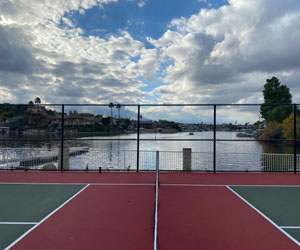 Court Dimensions: A standard pickleball court is 20 feet wide and 44 feet long, with a non-volley zone (the kitchen) extending 7 feet from the net on each side. The kitchen is a no-volley zone, meaning you can't hit the ball out of the air within this area.
Court Dimensions: A standard pickleball court is 20 feet wide and 44 feet long, with a non-volley zone (the kitchen) extending 7 feet from the net on each side. The kitchen is a no-volley zone, meaning you can't hit the ball out of the air within this area.
Scoring: Pickleball is played to 11 points, and you must win by at least two points. In singles, each side gets one serve, while in doubles, both players on the serving team have the opportunity to serve.
The Serve: The serving team starts the game from the right side of the court and must serve underhanded from the baseline. The serve must clear the net and land in the opposing service court, diagonally across from the server. It must also bounce once before being struck by the receiving team. The serving team continues to serve until they commit a fault.
Double Bounce Rule: After the serve, both teams must allow the ball to bounce once before they can engage in a volley (a non-bouncing exchange). This rule ensures that rallies begin with a level of control and reduces the possibility of quick, aggressive plays.
Faults: Common faults in pickleball include stepping into the kitchen while volleying the ball, hitting the ball out of bounds, failing to clear the net, or volleying the ball from the kitchen without letting it bounce. Faults result in the opposing team being awarded a point or the service.
Let Serve: If the serve hits the net and lands in the correct service court, it is called a "let serve" and is retaken without penalty.
Non-Volley Zone Violation: Players are prohibited from volleying the ball from the non-volley zone (the kitchen). Stepping into the kitchen while hitting the ball is a fault.